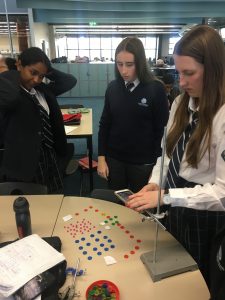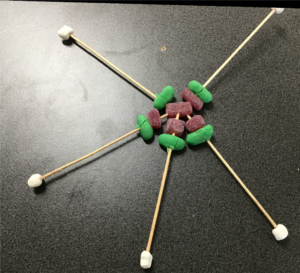Qualitative and quantitative surveying confirm the impact of FLEET outreach efforts
FLEET’s public and schools outreach seek to promote public awareness and literacy of FLEET science, contributing to public scientific literacy, raising and understanding of FLEET science among students and teachers, and improving public awareness of FLEET (and adjacent) areas of research.
But how do we know if we are achieving our objective? What impact are we achieving on awareness and literacy in our target audiences?
Evaluation is built into FLEET outreach, with each outreach event designed from the outset to allow evaluation, assessment and measurement against Centre goals.

Surveying indicated a low level of awareness, but high level of concern, about unsustainable energy use by computing
The event design of FLEET’s Melbourne Knowledge Week activities incorporated pre- and post-evaluation tools. Pre-evaluation established the audience’s ‘base case’ knowledge and mindset via a short two-question survey on butcher’s paper asking the public to select answers from a 5-point scale, rating their own awareness and level of concern re the central issue of increasing demand for computation and rising energy costs.
Post-evaluation asked the public to contribute to a mind map—again on a large sheet of butcher’s paper on display for the public– encouraging participants to build on core themes of computational demand (increasing 70% each year) and digital technologies energy consumption (8% of global electricity). An online survey asked participants to share one new or interesting thing they’d learned from the FLEET display, and to rate how their appreciation and awareness of physics had been impacted. Space for open-ended comments provided interesting conversations and common points, which could be integrated into the mind-map and survey analysis.
The analysis confirmed that FLEET’s presentations had had a positive effect on visitors’ appreciation and awareness of physics, with around 40% commenting on having learned something new. As visitors became aware for the first time of the increasing demand for computation and the associated energy requirements, with one typical comment being “We won’t be able to support our energy demands for our devices in 10 years at the current rate the demand is growing.”
And another: “I’d never thought of the computation-electricity demand problem and how closely related the issue is with my technology needs. It is definitely an eye opener.”
Visitors who worked in computing were particularly interested. For example, a VR visual artist mentioned he’d never considered the consequences of his own work’s high computational demand, realising with some concern that his environmental footprint was ‘massive’, and a data centre worker’s realisation that her role in encouraging more users onto ‘the cloud’ had social and environmental implications
An FLEET online ‘visit’ to Ashburton Primary School which introduced year 5-6 students to atomic structure and electrical circuits similarly utilised pre- and post-learning evaluative tools. Working over zoom with two in-class teachers, FLEET coached students to draw and describe their existing conceptions of atomic structure, electricity, and electrical circuits. Students’ initial drawings of atoms showed a common absence of the atomic nucleus, while after in-class discussion and hands-on exercises constructing a ‘lolly model’, this was largely resolved (with confusion about layers of neutrons and protons offering FLEET areas for improved explanation in future).
The value of selecting an atom to build from the periodic table was also underlined, with unexpected discussion of different elements and their roles.
Students also learned to think critically about FLEET’s research and about technology and how we use it, with qualitative before and after comments showing a focus on societal benefits, as well as some misunderstanding about the dangers of low electrical resistance.

Seeing female speakers from FLEET inspired girls to consider physics, ‘because I could see now there’s a place for females in this field’.
Qualitative and quantitative evaluation of the 90-odd Year 10s who have undertaken FLEET-JMSS’s future computing unit confirms the value of the course.
Comments confirm that students enjoyed and been engaged in the unit, which builds an understanding of semiconductors, Moore’s Law and computing from basic atomic theory and an intuitive introduction to quantum physics.
- The unit positively affected students’ consideration of physics as a subject in the future, potentially changing the minds of students who had not considered physics, and reinforcing the decision of students already planning to follow that route: “I had been tossing up doing physics in VCE over the last couple of weeks and this is kind of sealing the deal for me.”
- FLEET members delivering the course exposed students to a diverse cast of physicists, in particular using female presenters enabled female students to effectively realize a place for themselves in a physics-based career: “Seeing the female speakers from FLEET inspired me to consider physics, just because I could see now there’s a place for females in this field.”
- Meeting practicing researchers made physics seem more real, palpable and inclusive, allowing students to envision multiple opportunities in physics: “There are many components and jobs which compose this field and it really opened my eyes to the many possible job careers.”
“Our teachers JMSS have a lot of expertise in these areas already, but having someone who is currently doing research on this topic gives a deeper insight. It feels like what we’re learning is unfiltered.”


